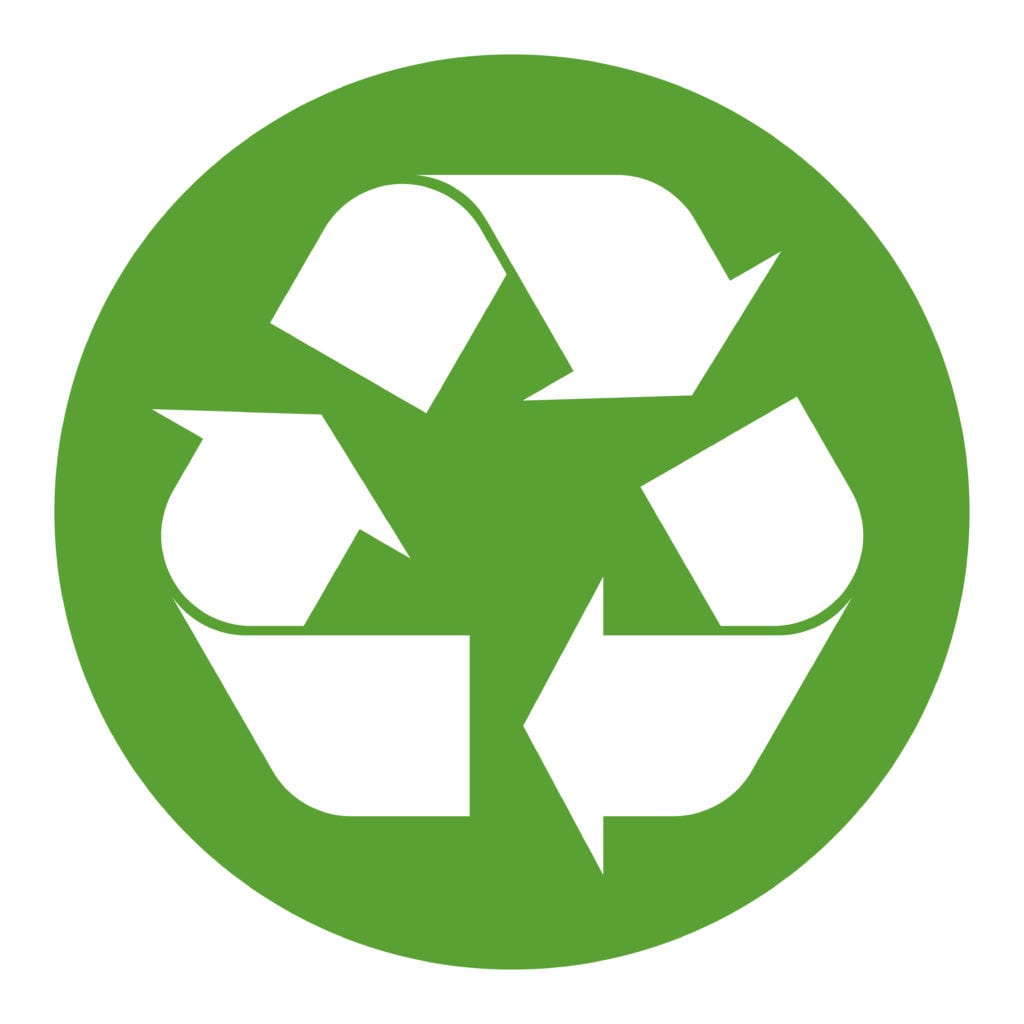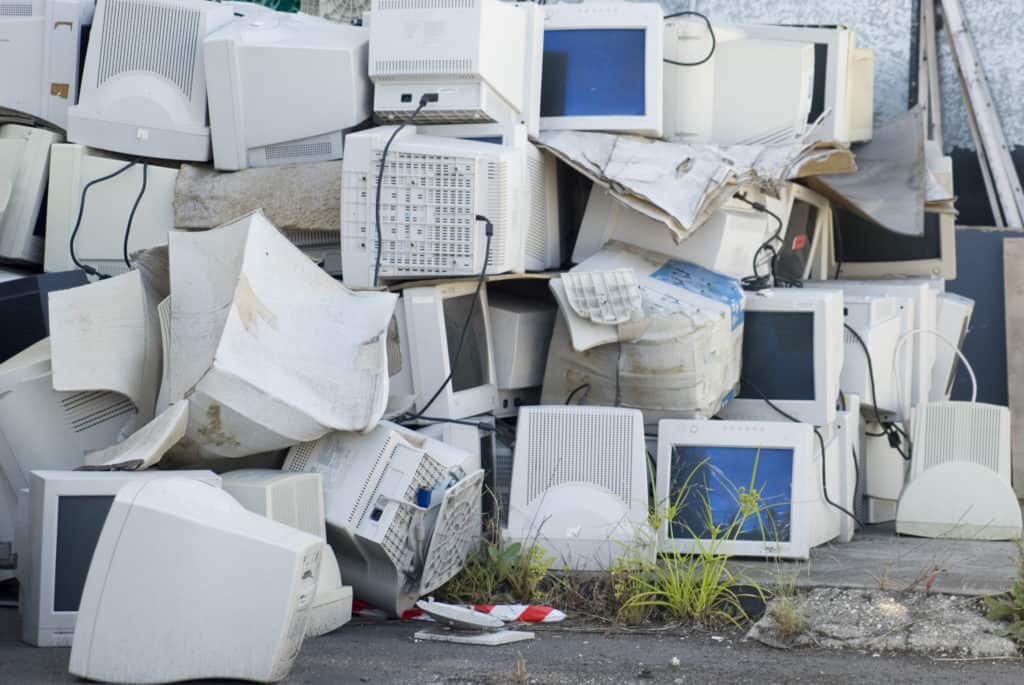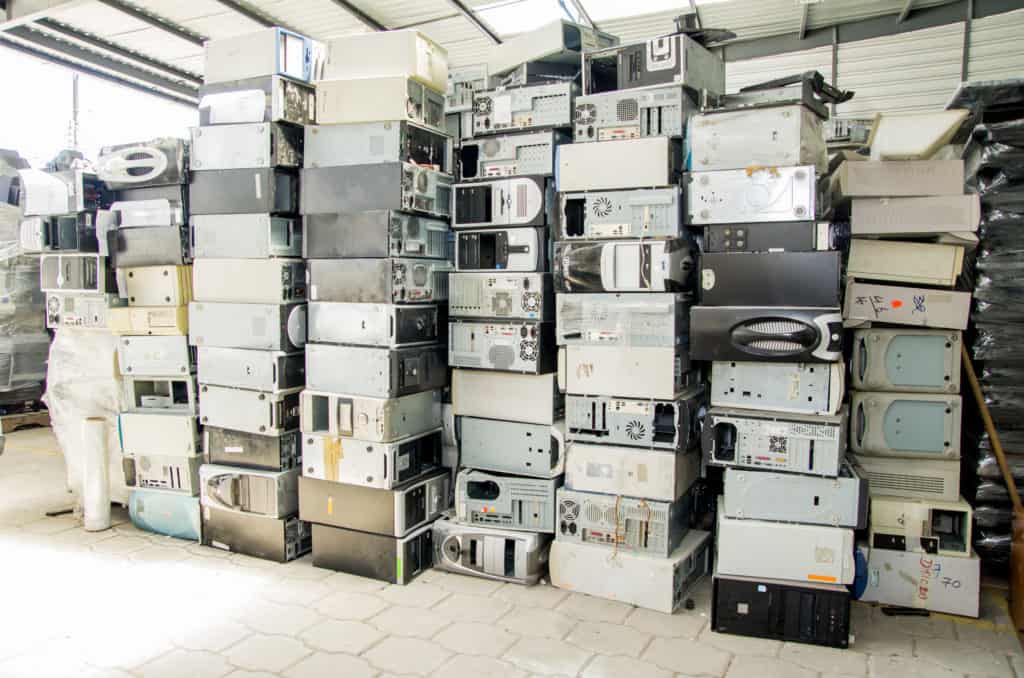- Article Updated: 20/2/2025
Key Takeaways
- The first recorded recycling of paper was in Japan in 1031.
- 1897 saw the creation of the first Material Recovery Centre.
- In 2003, the British government introduced the Household Waste Recycling Act.
- Statistics published by Defra on the 31st of January 2024 have shown that England’s recycling rate fell by 0.8 percentage points to 43.3% in 2022/23.
The History Of Recycling
Recycling waste is often viewed as a contemporary act of “green citizenship,” which began alongside the 1970s hippie environmental movement. While the term ‘recycling’ was created during the 1970s, the history of recycling goes back much farther than the late 20th century.
Defining the term recycling in a historical setting, however, is rather difficult. Does it mean everyday reuse of items on a local level, or nationalised transformation of materials? For everyday reuse, this goes back to the start of time. The concept of fixing and reusing items is edging away from our “throwaway society” culture, however, prior to this, almost everyone was recycling products within their homes.
Therefore, this article will track specifically the history of recycling, as opposed to reuse. When local governments and private businesses began treating and recycling waste to be redistributed into society.
Timeline
1031: Japan
As far as historians are aware, the first recorded recycling of paper took place in Japan in 1031. Paper mills existed, however they were state run and used only virgin raw materials. As the Heian Imperial Court lost power, private estate owners took over as the dominators of the paper market. In order to maximise output and conserve material sources, they would recycle paper by boiling it down to a pulp.
1690: Philadelphia, USA

The Rittenhouse Mill in Philadelphia is our next stop. They used fibres from textile waste to make recycled paper. This was the United States’ first paper mill.
1776: New York, USA
Metal recycling began during the American Revolution. Americans would melt down metal statues and other metal products in order to make more bullets to fight the British. The statues, unsurprisingly, were of British monarchs. King George III made 42,088 bullets.
1813: West Yorkshire, UK
A Batley local, Benjamin Law, created “The Shoddy Process.” This saw new wool being made from old clothes, mixing the old wool with virgin wool to produce new products.

1897: New York City, USA
1897 saw the creation of the first Material Recovery Centre. Solid waste items were sent to these centres to be sorted into separate waste streams. Then, they could be picked up by local people or businesses to be reused.
1904: Chicago, USA

Mass-scale aluminium production rose at the end of the 19th century. The result was the creation of the first aluminum can recycling plants.
The World Wars
Both World War I and World War II saw a huge rise in recycling and reuse initiatives as imports were limited. Subsistence living and internal recycling was central to the war effort on both sides across the globe. These wars saw the introduction of the first official nationalised recycling program. Governments reached out to the public, requesting they become more aware of the amount of waste they produced, while also enforcing a more rigid waste management system.
Waste cooking fats were collected at butcher shops to be used by the Ministry of Defence as explosive fuel.
1955: United States
The 1950s saw somewhat of a U-turn on recycling rates. The rise of mass consumerism saw a rise in ‘throwaway living.’ This rise of the single-use lifestyle was highlighted by LIFE magazine in 1955. The article was positive about this new culture, and pushed the general population, and corporations away from promoting recycling and environmental protection.
1970: United States
23 year-old student Gary Anderson entered the Container Corporation of America competition for a new recycling symbol. He won, and the famous ‘Mobius Loop’ is still the global symbol for recycling today.
1970 also saw the first Earth Day. Created by activist John McConnell in San Francisco, Earth Day aimed to celebrate earth and nature. It also aimed to bring national attention to waste management and recycling. This celebration still happens today, globally.

1977: South Yorkshire, UK
Barnsley, South Yorkshire saw the first ever Bottle Bank. Glass is one of few infinite recyclable materials, it does not lose quality. Therefore, bottle banks were a pivotal point of recycling history.
1974: Missouri, USA
University City in Missouri were the first to introduce curbside recycling programs. Waste producers could place their recyclable waste on the roadside to be collected and treated.
1983: Ontario, Canada
Ontario was the first to establish a complex domestic household recycling system. The ‘Blue Box System’ helped households sort their recyclable waste.
1991: Germany
The German government passed a law shifting all responsibility of packaging life cycles to the producers. This saw the birth of corporate environmental responsibility.
1991: Switzerland

Recycling electronics recieved little attention before the end of the 20th century. Switzerland made history when they created an electronic waste recycling system. Electronic waste could be collected and recycled free of charge.
2003: Europe
The European Union (EU) created a law for waste electrical and electronic equipment (WEEE). The goal was to improve e-waste recycling. The law is still in place and continues to be revised today.
2003: UK
In 2003, the British government introduced the Household Waste Recycling Act. The law stated that all local authorities must collect at least two types of recyclable waste materials from households by 2010.
2015: UK
The introduction of the 5p single-use plastic bag charge. This charge sparked the birth of taxing single-use plastic. The result was an 80% drop in plastic bag use in the UK.

2025 And Beyond
As we move into 2025 and beyond, the future of recycling is more critical than ever. With advancements in technology, growing environmental awareness, and increasing government regulations, businesses and individuals alike must continue to innovate and adapt.
At Collect and Recycle, we remain committed to driving sustainable waste management solutions across the UK, helping businesses reduce their environmental impact and work towards a circular economy.


